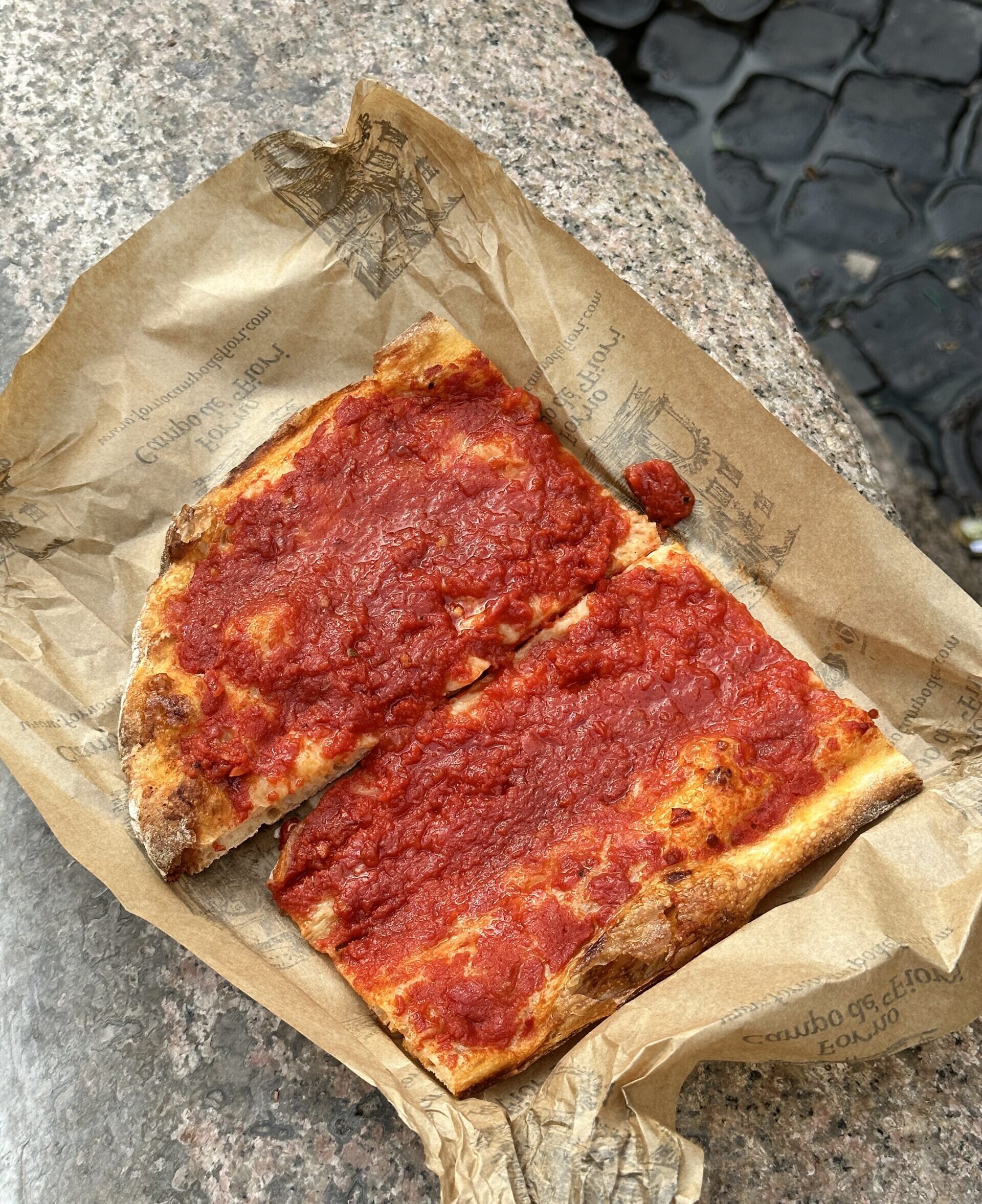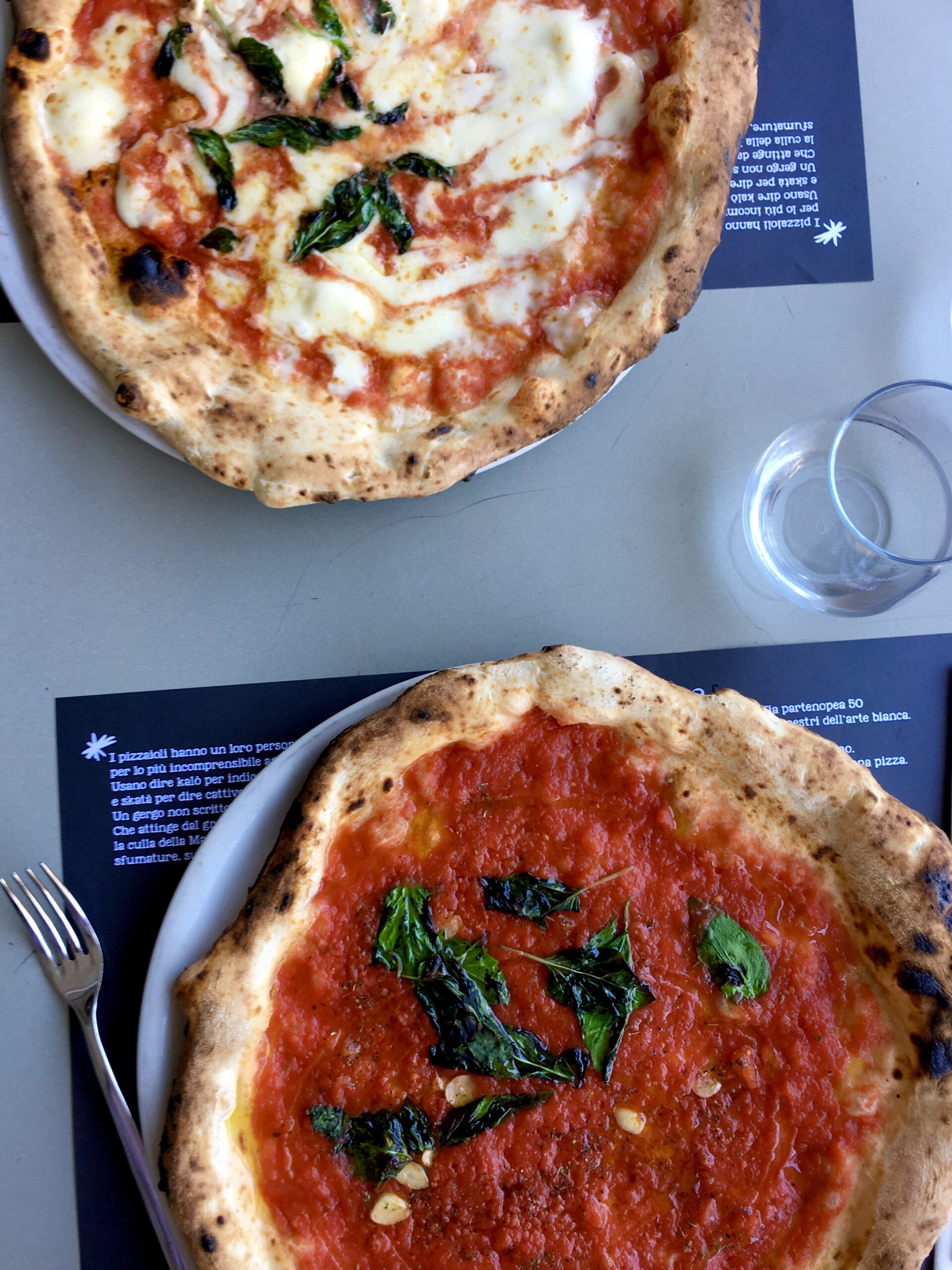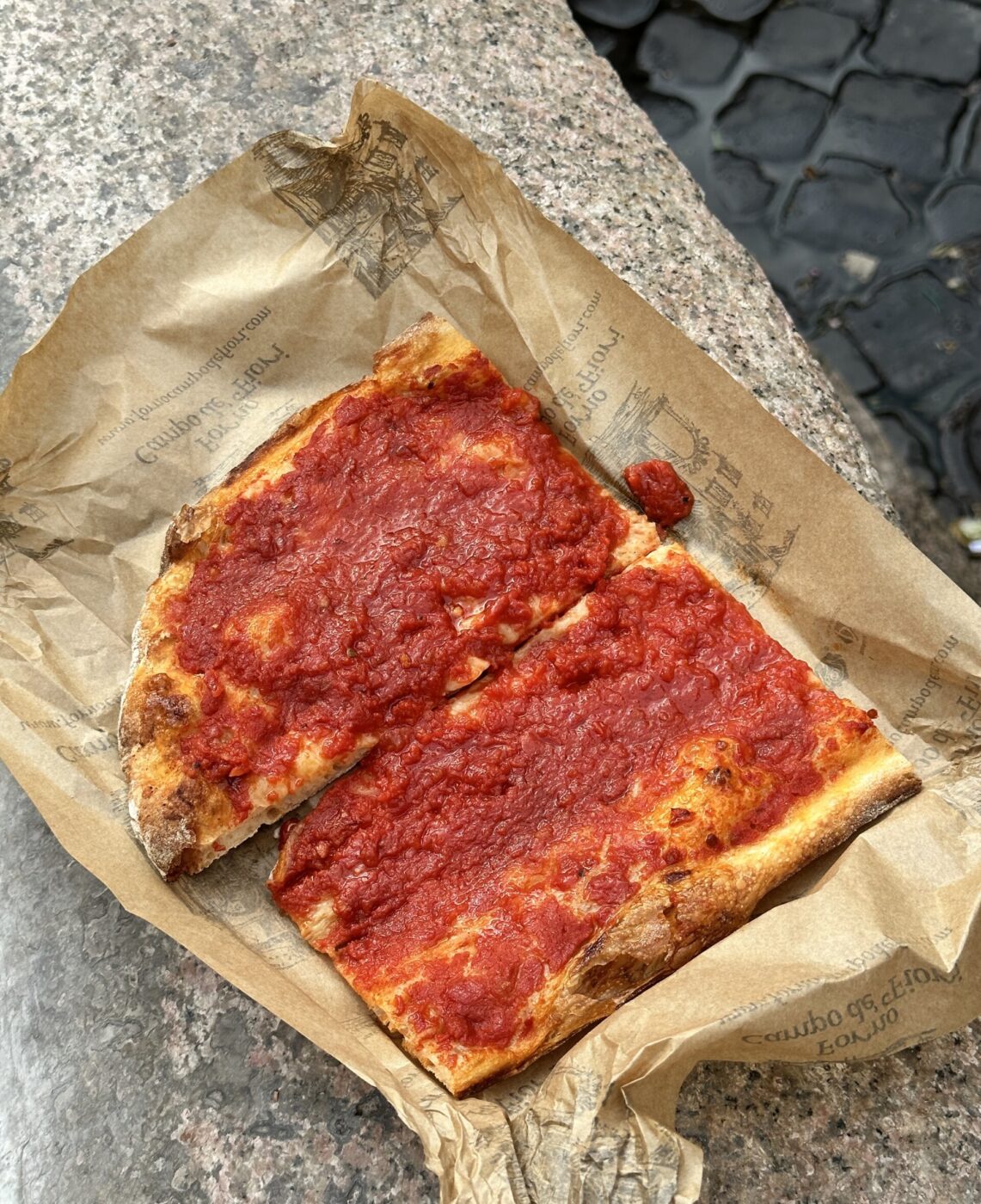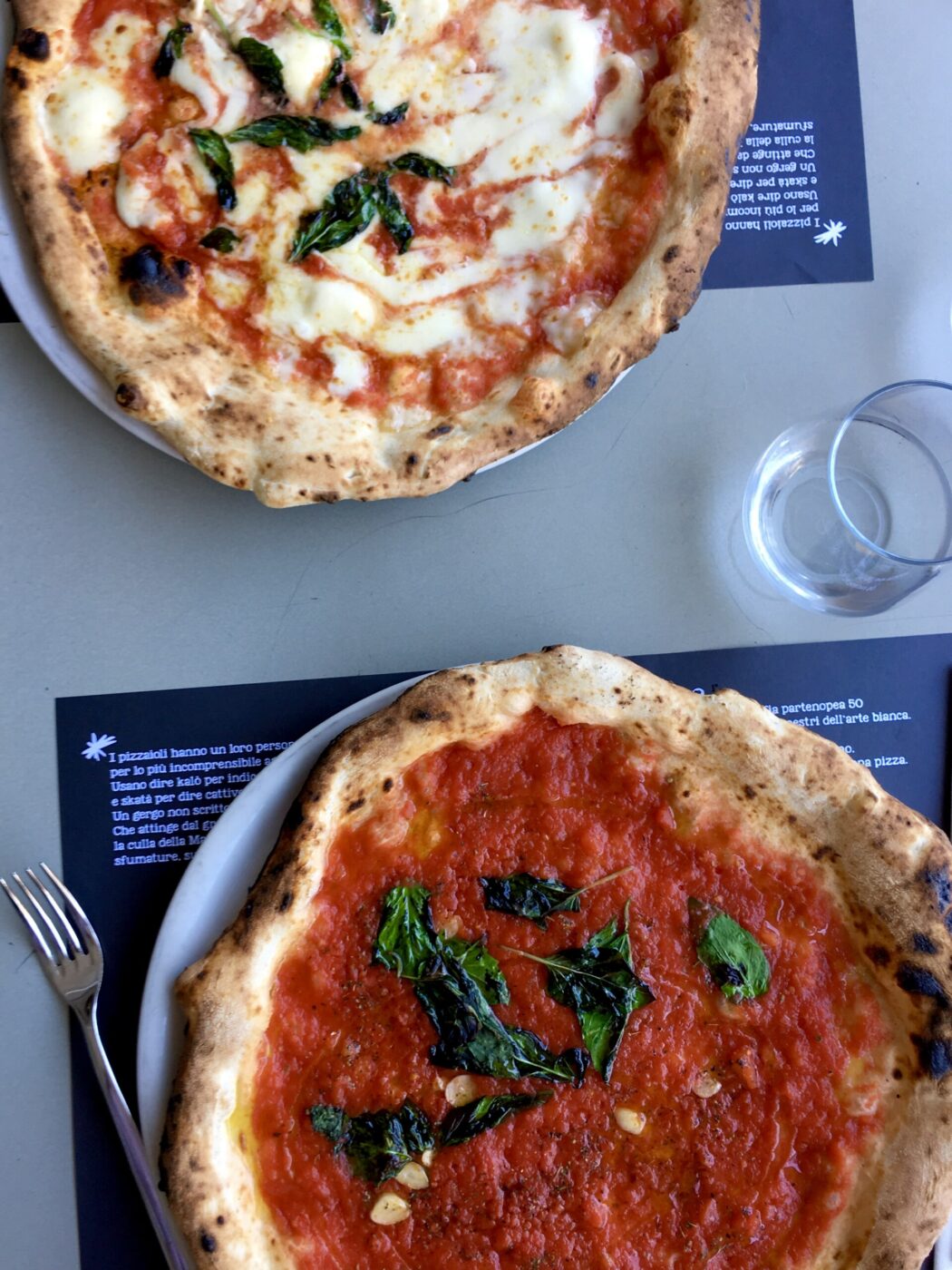If there is one food Italians like to talk and argue about more than any other, it’s undoubtedly pizza. What might start as a casual conversation can quickly turn into a passionate dispute, and it all comes down to one fundamental rivalry. Two of Italy’s most iconic cities, Naples and Rome, lay claim to the ultimate wood-fired pizza, each insisting theirs the fairest in all the land. Pizza napoletana (thick, fluffy) vs. pizza romana (thin, crunchy)—with some willing to fight tooth and nail for their personal preference.
But first, a quick primer on pizza: for millennia, Italians have been making the stuff. The Latin word “pinsere”, meaning “to knead”, gave rise to the Ancient Roman pinsa, a flatbread so worthy of worship that priests offered it to the gods. Unlike today’s pizzas, pinsa was made with a mix of wheat, barley, and spelt flour, often topped with herbs, cheese, or honey. It was a simple, peasant food—an early expression of Roman ingenuity in the kitchen.
Another nine hundred years passed before the first reference to the word “pizza” emerged from the small seaside village of Gaeta, which coincidentally (or not) lies bang in the middle between Naples and Rome. (The document, from 997 AD, records that a church in town accepted “pizza” as payment for land rent—a plot that included a vineyard and a mill.)

The pathway to the perfect pizza was looking progressively sweeter with the arrival of the tomato in Europe during the 16th century. By the 18th century, Neapolitan street vendors were slathering flatbreads with tomato, anchovy, and garlic, serving them hot and fast to the city’s bustling working class. And, if we fast forward to the year 1889, the city’s chefs were hastily kneading in anticipation of Her Majesty’s visit. For Queen Margherita of Savoy, basil, mozzarella, and passata were laden on dough; their colors paying tribute to the newly established Italian flag. Fit for a queen, fit for all, the pizza Margherita was born.
While the Italian monarchy may be long gone, pizza still reigns supreme. There are at least 63,000 pizzerias throughout the country and a staggering 1.6 billion of the crusty delights bought and devoured nationwide per year. (They’re not alone: important scientific studies have posited that pizza is the most popular food in the world.)
And, speaking of crust, it’s at the pizza’s doughy foundation that we find the spark of the epic debate between Rome and Naples.

Pizza romana al taglio
A traditional Neapolitan pizza boasts a fantastically thick and airy outer edge that thins into a soft and chewy center. Pick up a slice and the inner dough droops, surrendering to its toppings and urging you to tuck in quickly. Although meats and various vegetables may be offered as garnishes to your pizza, the key to enjoying the very best in Naples is in keeping it simple. Many Neapolitan pizzerias will serve just two classics: the Margherita and the marinara (simply tomato, garlic, and oil), cooked for a maximum of 90 seconds at a mighty 480°C (900°F). The city’s pizzaioli (pizza chefs) are put under pressure by the Associazione Verace Pizza Napoletana, in charge of holding “true” Neapolitan pizza to a strict set of guidelines; should pizza makers wander away from tradition or skimp on excellence in any form, this group of so-called “pizza police” will be there at the ready.
A couple hundred kilometers up the coast and the Romans are munching (and crunching) on a whole different breed of crust. It’s thin, light, and crisp, dubbed “scrocchiarella” (“the crunchy one”) by many. While Neapolitans refrain from using fat in their dough, the Romans cut back on water and add a good glug of oil to the mixture. This allows the dough to be stretched further, i.e. rolled out as thin as desired. Although this structure allows for more generous toppings, simplicity takes the lead again. Pizza rossa (topped with a thin layer of punchy tomato sauce), pizza bianca (plain with a drizzle of oil and a sprinkle of salt), or pizza con patate (topped with thin slices of potato and rosemary) are three of the most popular Roman variants. Though they do come round, they’re most often found cut by the rectangular slice, known as pizza al taglio—an on-the-go style of pizza designed in the post-war period for convenience. Joints serving pizza al taglio are on practically every corner of the city and a slice or few (cut to your desired size) is a low-cost, lunchtime (and snacktime) dream come true.
There seems to be no end to the highly subjective pizza romana vs. pizza napoletana debate, but I say, why take sides when you can have your slice and eat it too? A crisp, crunchy pizza romana al taglio for a quick bite on the go; a puffy, fluffy pizza napoletana for a leisurely dinner—each has its place, each its moment. So, keep up the delicious debate (it is a whole lot of fun), but remember you can always have the best of both worlds.







